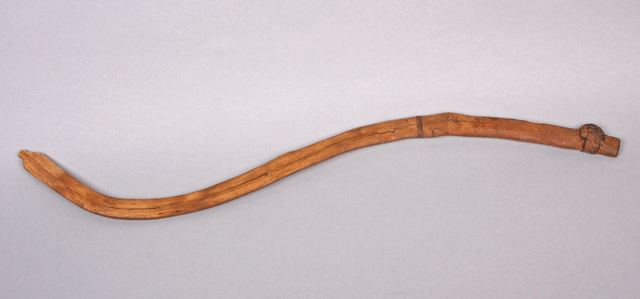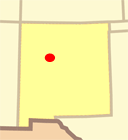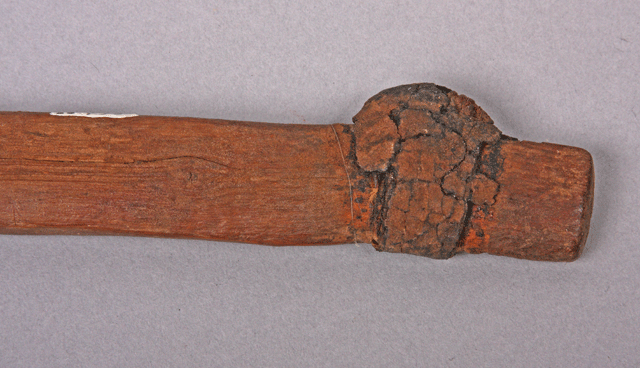


66.90.50, fending stick? Wood, cordage, pitch
Prehistoric; from near Correo, N.M.
UNM field school collections
Photograph by B. Bernard
Archaeologists working in caves in the U.S. Southwest have repeatedly found curved sticks with flattened cross-sections and parallel grooves down their lengths. The traditional name for these finds is "rabbit sticks," because the prehistoric items resemble the sticks that Pueblo Indians use during communal rabbit drives. The Pueblo sticks are aerodynamic enough to be thrown accurately at fleeing rabbits, but do not return to the thrower the way Australian boomerangs do.
The prehistoric sticks come in two basic shapes: the S-shaped version shown above, and sticks shaped like an open C. It's possible that the S-shaped sticks are older, and functioned primarily to defend the user against incoming atlatl darts. Such darts travel slowly enough that with practice, it's possible to deflect them as they approach—at least that's the theory. The S-shaped sticks are our best candidates for "fending sticks."
Fending sticks became obsolete once the bow and arrow was adopted in the Southwest, about 1,400 years ago. Arrows travel too quickly to be batted to one side by the intended target. Instead, the region's warriors began using shields. Under this telling of events, the loss of the "fending" function led to the use of shorter, C-shaped sticks used primarily for throwing—the modern Pueblo "rabbit stick."
If all this sounds rather speculative to you, you're quite right—but we may have better answers in the near future. A University of New Mexico student is examining these sticks for his dissertation research, including by looking at wear patterns and other evidence visible only under a binocular microscope. Some clues are quite obvious, however, such as the weight or grip assist added to the handle end of this S-shaped stick (shown more closely in the next photograph).

Detail of 66.9.50, showing pitch-covered weight or grip assist
Photograph by B. Bernard
To see additional fending stick photographs, please click here.
To return to the thumbnail on the Tools page, please click here.
All content copyright © Maxwell Museum of Anthropology, University of New Mexico. High-resolution versons of these photographs may be ordered from the Maxwell Museum's photo archives. Please make note of the catalogue number. For more information please visit the photo archives web page
Page last revised on September 1, 2009. Please report problems to toh@unm.edu